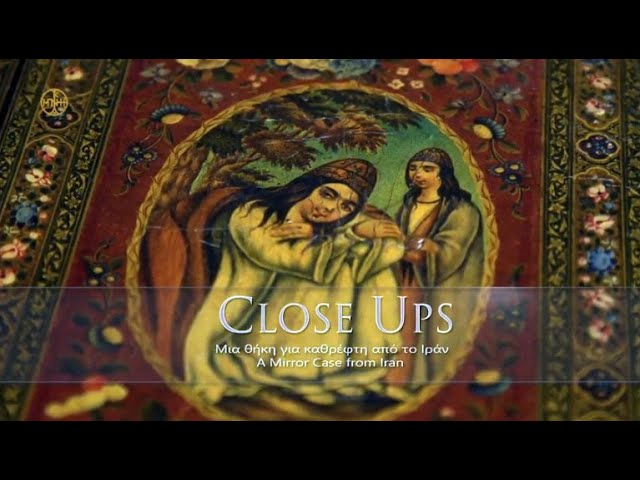For non-Greek speakers, this video requires captioning. After clicking the video’s play button, hover your mouse cursor over the lower border of the video, then click on the ‘CC’ button to turn on English subtitles.
In this video from the Benaki Museum’s CLOSE UPS series, Mina Moraitou, curator of the Museum’s Islamic art collection, presents a 19th-century mirror case from the institution’s Iranian collection, richly ornamented and typical of the art of the Qajar period (1789-1925).
The country’s main centres of production for such objects at that time were Shiraz, Isfahan and Tehran, Moraitou says. There, dedicated artisans would decorate precious items, such as pen cases, little boxes and book bindings, with the video’s mirror case being representative of such craftsmanship.
The case housed a square mirror, continues the Benaki curator, inscribed with its creator’s name – Rahim Kashi – as well as the year it was finished, 1869.
The artwork on the mirror case’s cover depicts Sufi figures, symbolising humility and abstinence. Its interior and underside, meanwhile, portray women in gardens, together with portraits and landscapes.
Typical for the art of this period, figures on such objects often wear Westernised garments, adds Moraitou, signalling the close ties between Iran and Europe in the 19th century.
View the original video here.
Good Living is the Cyprus Mail’s portal of curated content from across the internet, showcasing local and global ideas, cultural highlights, and scientific and technological developments to inspire a sustainable life.







Click here to change your cookie preferences